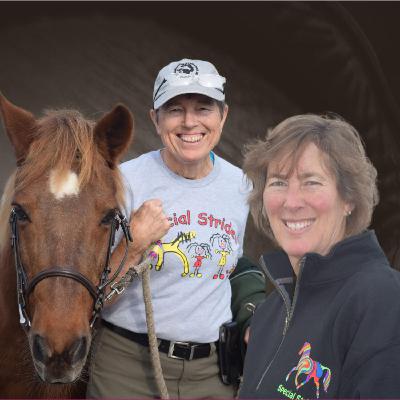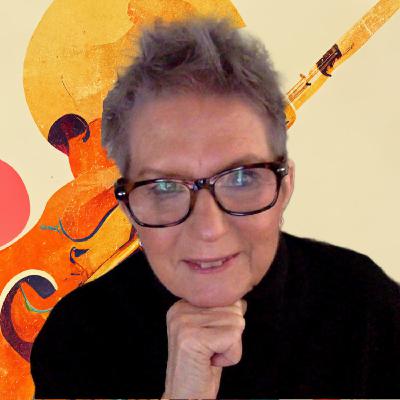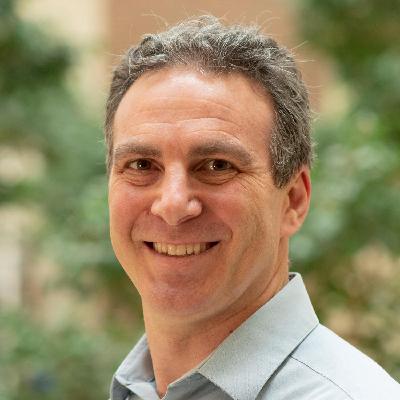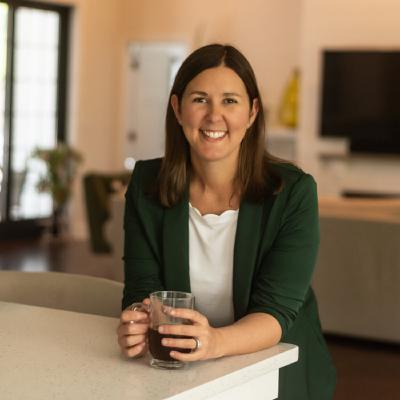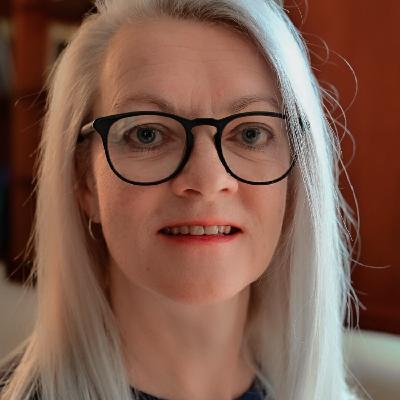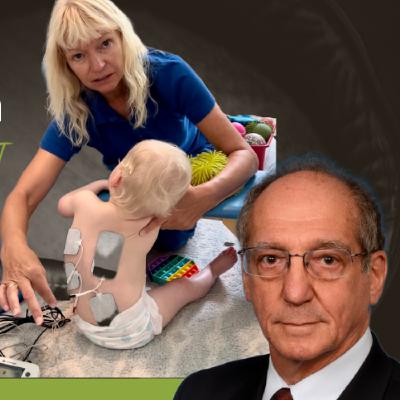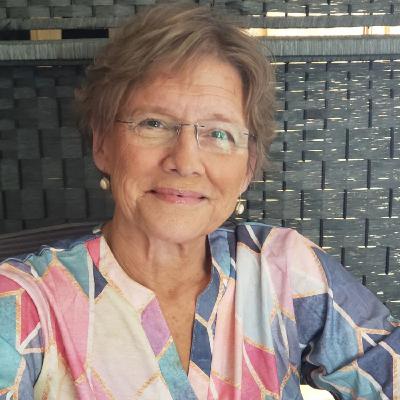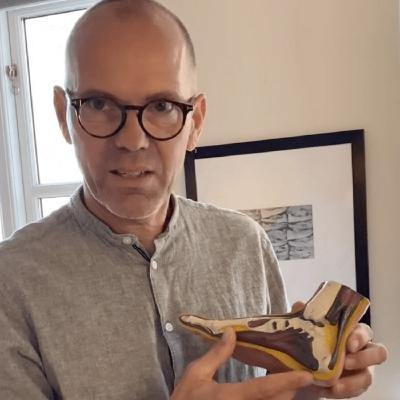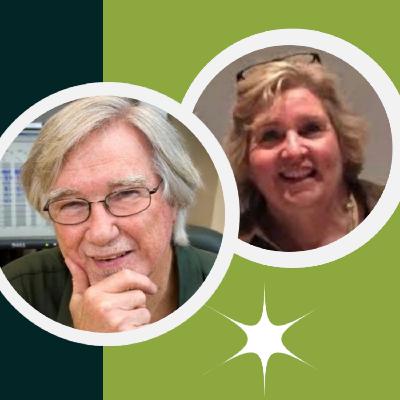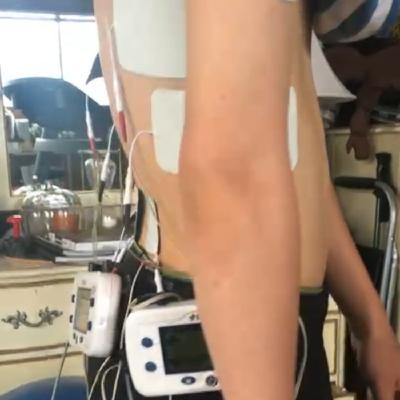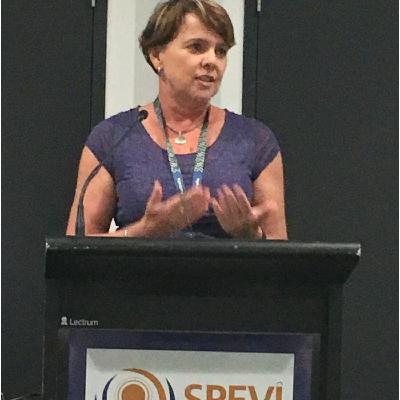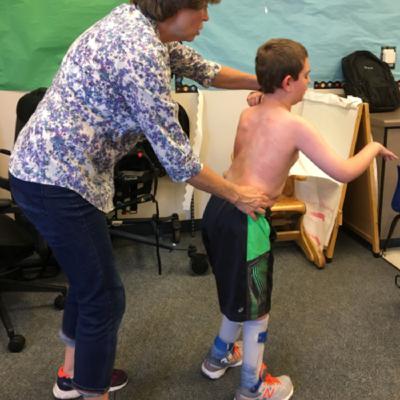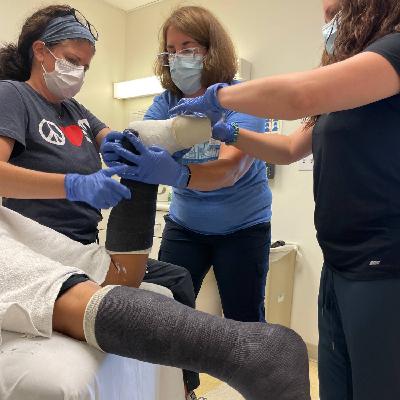Discover wiredON Development Interviews
wiredON Development Interviews

wiredON Development Interviews
Author: wiredON Development
Subscribed: 196Played: 1,435Subscribe
Share
© 2019 WiredOn Development
Description
A collection of knowledge and insights from brilliant clinicians in the field of neuromotor development and childhood disability to inspire, motivate and provide you with the tools to help the amazing kids you treat develop their potential www.wiredondevelopment.com
44 Episodes
Reverse
Michael Workman (PT, Bamboo Brace designer, and neurodevelopmental geek with 30 years of floor-time wisdom) joined me for a fascinating deep dive into the hidden power of such a seemingly simple wearable device for such a seemingly simple joint.
If you're a therapists who sees the elbows as gateways to whole-body potential, you're going to love what Michael has to say! And if you're a therapist whose mostly thought about the elbow as just a hinge that needs to be stablized between two complex joints, you’re going to be fascinated by how much you can get out of working on the dynamic control of this joint.
Of course we get into a lot of detail about the Bamboo brace itself and even touch on what it takes to bring a therapy product to market, but the real gold in this interview is the deep dive into dynamic bracing, dynamic thinking and dynamic interventions - everything works better when it’s moving. We jump between joints and synergies. We revive the open chain and it’s importance in not only upper limb function, but the development of motor control that must come before the development of strength - and of course we get into the practicalities of using the brace - which kids benefit, when and where. There’s so much to take away from this interview!
Enjoy.
Nobody becomes a pediatric therapists to make children’s lives miserable, or worse, create pain and life limiting boney deformities and yet, there’s a very real possibility that somewhere along your career path, that’s exactly what your suggestions or recommendations might have done. Now this is a confronting thought , but one that needs some airtime, with a little self-reflection and no judgement - certainly not from me, because I’m right there with you.
I think it was Maya Angelou who said ‘do the best with the knowledge you have, but when you know better, do better’ which is a lovely quote to live by. With that in mind, this conversation with Sharon Sutherland and Jenn McKee is a not to be missed deep dive into what they call a human first approach to seating and wheelchair mobility, but what I’ll call a holy smokes - our solutions may have been part of the problem here people.
Sharon and Jenn share how they support seating and wheelchair mobility with a beautiful human first approach. We discuss real clinical cases and dig into all the tricky bits we constantly run up against as therapists, managing head support and keeping feet on footplates, complex bodies, silent pain, navigating team disagreements and technology shortfalls, getting family buy-in, dynamic systems and pommels. There were so many essential topics we covered that this interview extends waaay over the usual hour. I was going to split it into two parts, but I’ve decided to try out a longer form interview. Please let me know if you like the longer interview - and if, like me, you had a couple of slap the head moments!!
There's a ton of additional links and resources for you to grab at https://www.wiredondevelopment.com related to this conversation
Enjoy!
This was such a fun interview for me to do but be warned, once you’ve listened to Jane and Susie explaining the benefits and mechanism of equine assisted therapy, you are going to want to go find yourself a stable with a few horses and get trained in hippotherapy if you’re not already. . I was genuinely blown away by how the the horse can be used to impact motor learning, and how as therapists we can integrate the whole sensory motor experience into our therapeutic goals. This interview will take you on a fascinating journey into hippotherapy - enjoy the ride.
From philosophy student and activist to pioneer in early childhood intervention approaches for therapists, Karen Kangas takes us on a journey of developing clinical excellence. She is an occupational therapists with over 50 years of experience, specializing in pediatrics, seating, and augmentative and alternative communication (AAC).
She has particular knowledge and expertise in working with children with significant disabilities, particularly those with dystonia and dystonic cerebral palsy.
Karen beautifully bridges the gap between ‘old school’ hands on approaches and a more contemporary hands-off focus on participation and real-life activities and engagement.
We cover seating and positioning, standing, walking and appropriate equipment use, developing clinical skills, the magic of the barrier vest and understanding movement patterns.
You'll find links to everything we discussed at https://www.wiredondevelopment.com
Enjoy!
James Sultzer is an academic neurorehabilitation engineer and a father to a child with a significant brain injury. This conversation is a raw look at the real state of the evidene in pediatric neurodisability from the someone who is living through the reality of how it supports families to make incredibly difficult decisions as they seek out the best care for their kids. We move from discussing the value of goal setting and home programs all the way to trying to uncover the fraud and the pseudoscience that parents are navigating everyday. This is a profoundly important conversation that is a must listen for everyone working with families who have children with disabilities. I know you'll get a lot out of it. Enjoy!
For resources mentioned jump to https://www.wiredondevelopment.com
When it comes to understanding how the work that we try to do every day in the clinic actually works, this interview with Dr Susan Barry may be one of the most eye-opening interviews I have done so far - excuse the pun. Dr Barry is a a Professor Emeritus of Biological Sciences, Professor Emeritus of Neuroscience and Behavior and (as she calls herself) a recovered Strabismic. Her story of fixing her gaze which started at age 48 gives us unmatched insight how neuroplasticity can be harnessed in every day therapy to drive recovery. WE cover so many topics that are near and dear to my beating therapy heart, and from the value of clinical wisdom and the cautionary tales of over interpreting published research to the importance of not being distracted by the obvious problems you see, but rather understanding the reason behind why you are seeing them. There’s so many nuggets to take away from this interview, you are going to love it - enjoy!
This interview with the OccuPLAYtional Therapist, Kelsie Olds, is an absolute treat. We cover the realities, practicalities and benefits of child-led therapy, the integration of play in therapeutic practices, push-in vs pull out services, balancing the conflicts that arise from staying true to your core values as a therapist with meeting your service requirements and so much more
For links and resources, visit https://www.wiredondevelopment.com
04:45 A uniquely rich learning environment
13:32 Regcognising and addressing underlying difficultes
22:46 Finding the best learning opportunities
27:44 Whose actually my client?
31:26 The magic of a trust and values based approach
37:34 Navigating School Systems and Advocating for Child-Led Therapy
>> 39:13 Be Informed
>> 41:20 Value the team
>> 42:21 Keeping the child at the center
44:38 Push in vs Pull out
50:53 Gaining Respect and Buy-In from Teachers
52:58 Understanding motor skill levels through play vs standardized testing
59:32 Stop asking questions
01:04:27 Everybody is unique and we are all the same
01:08:54 Neurodiverse Conversations and Activism
01:11:06 Interoception
More than a decade ago, I asked a question which finally gets answered today. The question was
'Why, despite the poor evidence, do intelligent, scientifically minded, educated and experienced therapists still value it?
Or do they?'
Prof Margaret Mayston exemplifies the intelligent, scientifically minded, educated and experienced therapist.
She trained initially as a physiotherapist in Melbourne, Australia, and then specialised in childhood neurodisability at the Bobath centre in London before pivoting to a career in science by the completion of an MSc in Human & Applied Physiology (Kings College London), a PhD in neurophysiology, and a 3-year Wellcome Trust funded postdoctoral fellowship, both at University College London (UCL).
She has combined her clinical and academic careers, and is currently a Professor (teaching) in the Division of Biosciences at UCL teaching neuroscience and general physiology on undergraduate programmes. She also gives sessions on Typical Child Development for the MSc Advanced Pediatrics (UCL) and as a Senior Bobath Tutor (pediatrics) she also teaches on Foundation courses globally and is involved in tutor training.
We cover so much more than Bobath therapy in this interview, from basic physiology to philosophy and everything in between, but essentially this interview explores why the call to deimplement Bobath NDT is so misguided and captures why intelligent, scientifically minded, educated and experienced therapist think all over the world think the call to deipmlement Bobath NDT is not only ignorant and misguided, but detrimental to our profession as a whole, and a disservice to the kids and families that we are tasked with caring for.
Check out the resouces and article discussed in this paper https://www.wiredondevelopment.com
Interoception is a key sense that has been widely studied for decades but is only now making its way into clinical applications and Kelly Mahler is an amazing occupational therapists who is leading the way both clinically and academically in understanding the role of this key sense for occupational and physical therapists working in neurodevelopment. Don't miss this practice changing conversation on how we should think about interoception in our clinical work. It's jam packed with practical ideas and actions that we can take back to the clinic right now.
I know you’re going to love it!
Enjoy!
A passionate and engaging conversation with Dr Julie Vaughan-Graham, PT, PhD, Advanced IBITA Instructor, Adjunct Clinical Professor at McMaster University and University of Toronto, Canada and Founder of Physio-Logic and iNeuroRehab . Julie shares insights from her research on the Bobath concept, and the importance of postural control, selective movement and movement variability and efficiency. We discuss clinical reasoning, the challenges of research, and the future of physio/ physical therapy. If you've ever had questions about the state of the evidence in this area of practice, you're going to find this conversation enlightening. You can find all the resources mentioned in the discussion at https://www.wiredondevelopment.com
In the evolving landscape of pediatric neurorehabilitation, the emergence of therapeutic coaching has marked a paradigm shift. This approach, which marries therapeutic principles with the empowering dynamics of coaching, is designed to effect profound, tangible changes in the lives of children and their families. Occupational Performance Coaching (OPC) is a distinctive coaching methodology that positions families and goal setting at the heart of therapeutic interventions.
The mind behind this transformative approach is Dr. Fiona Graham (Fi), an occupational therapist who has developed, taught, and researched OPC. Her work presents a mix of deep expertise and a passion for supporting children's success in everyday life.
If you've ever wondered about the potential of therapeutic coaching in pediatric neurorehabilitation, this interview is a must-listen. Dive into this conversation with me as I explore the nuances, challenges, and benefits of an evidence based approach to therapeutic conversations, coaching and therapy in neurodisability.
Gerti Motavalli and Dr. Alon share their insights into the work they have been doing with non-invasive spinal stimulation that is changing the lives of many children with Spina Bifida. We dig into both the theoretical and practical application of this this protocol, as well as how it compares to other electrical stimulation approaches in pediatrics.
With decades of experience and a background spanning multiple countries, Gerti and Dr. Alon bring a wealth of knowledge along and practical experiences to this fascinating topic.
Grab more resources at https://www.wiredondevelopment.com and enjoy the learning!
There are many brilliant and passionate therapists in our world of neuromotor development, but few come close to Beverly Cusick in their ability to shape the lives of the children we see. I mean that both at the most pragmatic level where Billi’s teaching of serial casting and orthotic prescription has literally shaped thousands of feet for the better, and her brilliance in developing TheraTogs has contributed to the improved alignment and development of a thousand more little bodies. But I also mean this as a more theoretical level where Billi relentless drive to make sense of the science as it relates to growing bodies and her pedantic attention to detail has given us the most impactful tools in our therapy toolbox to really understand, measure and monitor the work that we do reliably, repeatably and meaningfully. For me this is the essence of evidence based practice, especially in our world of complex, multi-faceted, ever changing little bodies.
For the longest time, the research into the effectiveness of TheraTogs has not matched the interest and value that therapist who use it properly see in their day to day practice. Recently however, a few papers have been published that are starting to get closer to capturing these therapeutic benefits that clinicians’ have been excited about for years. I sat down with Billi to discuss why previous research has failed to capture our experiences and what’s different about this new research that may change the narrative - because evidence based practice shouldn’t be about quoting publications, but critically appraising the research and demanding that it reflects the true nature of the work we do.
for resources and more discussed in this interview visit https://www.wiredondevelopment.com
Per is a Physiotherapist from Denmark and founder of Solemaids, a custom orthotic for children with Sever’s Disease / calcaneal apophysitis. His passion for feet and running related injuries led him to develop Solemaids more than 20 years ago which he is still supplying from his in-house workshop, despite a global reach. This was a great conversation about what it takes as a therapists to develop and support a clinical product globally, as well digging into the incidence, trajectory and impact of Sever’s. We also touch on the research, and what it means to have a research supported product for clinician / developers. Per’s approach is systematic, thoughtful and insightful, and his relatively straight forward solution to this sometimes life interupting issue is something we should all have access too. A must listen! Enjoy!!
In part 2 of this interview on spinal neuromodulation with Dr Susan Hastings and Dr Reggie Edgerton, we get into the questions that everyone is asking; how is it different to FES? What is the difference between the different units and parameters? Who does it work on, and more. We dig into some in depth discussions about application and precautions and touch on getting involved in the research. Check out the wiredon development website for details. In part 2 of this interview we take the theoretical discussions and move into real practical considerations. You’re going to love it. Enjoy
Dr. Susan Hastings is a physical therapist who stumbled upon the hidden potential of the spinal cord in treating children with cerebral palsy. In her quest to understand what she was seeing clinically, she found Dr. Reggie Edgerton, a pioneer in the field of spinal cord injury recovery. Together they have been exploring the potential of spinal neuromodulation to drive recovery in children with cerebral palsy. Their work is set to change the way we think about rehabilitation in cerebral palsy, and in this interview we dig into the history, feasibility, theories and implications of spinal neurorehabilitation. You'll find links and resources discussed in this interview at https://www.wiredondevelopment.com
Maybe not so much the OTs in our world or neurodevelopment, but certainly as PTs we have prioritised motor function over sensory function when we think about how the body works. The more we learn about the importance of the sensory pathways in the sensory-motor loop, the better we get at understanding how, as therapists who can only work from the outside in, we can impact the whole system when we pay attention to the incoming information, and more importantly the processing and interpretation of that incoming information. And of all the senses, vision could arguably be the most important for driving, modulating and impacting neuromotor development, which is why I am so excited to be brining you this interview today with Bronwen Scott, talking about all things vision and development. Jam packed full of useful insights, practical applications adn clinical pearls, you’re going to love this conversation - enjoy!
There’s nothing I love more than amplifying the voices of passionate clinicians who have the kind of wisdom and insights that can only be found through years of real world real life experiences mixed in with an endlessly curious mind and an irrepressible excitement for whats possible. That’s exactly what Julie Perfect brings to this interview. Years and years of learning, doing, teaching and learning some more about standing and gait development makes for fascinating conversation about this topic that holds so much influence over the work we all do. So much more than a marker of ability, standing and walking delivers a promise of participation and independence across the life span IF we get it right - and in this interview, Julie shares some of her hard earned wisdoms about exactly how to do just that. We start off - as most good stories do - at the point where it all began…
For links and resources related to this podcast visit www.wiredondevelopment.com
It is possible to have been a therapists for 30+ years, worked with hundreds, if not thousands of kids and have completely missed a glaring piece of the puzzle that was hidden in plane sight. That’s how I felt dipping into Dawn Sandalcidis’ world of children's bowel and bladder issues. Guilty that I hadn’t paid enough attention to the conversation with parents about their kids constipation, fascinated about how much their was to know about this most basic human function and excited about what we could do as therapists to make significant impacts in the lives and well-being of the kids who cross out paths if we just pay attention and ask the right questions.
Dawn Sandalcidi is know as a trail blazer in this areas of kids bowel and bladder and she is that and so much more. I think we squeezed more into this interview than any other interview I’ve done. More questions, more diagnoses, more practical tips , insights and inspiration - Dawn seems to make the impossibly complex simple and doable. I know you are going to gain so much from listening to this interview!
Enjoy!
For links and resources jump to the full episode page on http://www.wiredondevelopment.com
And if you enjoyed the conversation, you'll love The Wired Collective. Look for the waitlist link on the wiredOn Development website..
This interview is packed with practical tips, brilliant insights and golden nuggets to take away. We get into the weeds of idiopathic toe-walking, CP and and orthotic devices in but just as importantly, we explore the realities of bringing clinical work and evidence based practice into alignment (excuse the pun).
Because this interview has such a practical focus, I do need to state that all advice is in this and all wiredOn interviews is general information for our individual growth and learning and is not meant as treatment or clinical advice, even when we are discussing specific clinical cases.
Therapy in pediatric neurodisabilty is both an art and a science and Brigid Driscoll brings these together so eloquently in this wiredOn interview. I know you are going to get so much value out of this interview - enjoy!
For links and resources jump to the full episode page on http://www.wiredondevelopment.com
And if you enjoyed the conversation, you'll love The Wired Collective. Look for the waitlist link on the wiredOn Development website.




